|
 |
 Super Foods!!
Super Foods!!
Avocado
Avocados are a good source of protein, starch and monounsaturated fat, which can help lower blood cholesterol levels. They are rich in vitamin E, an antioxidant that protects cell membranes as well as thinning the blood and boosting the immune system. Avocados also contain vitamin B6 which is important for a healthy nervous system and may help to reduce the symptoms of premenstrual syndrome. This fruit is also rich in potassium, a mineral that helps regulate body fluids, and is important for a healthy nervous system. It may also be beneficial in reducing high blood pressure.

Bananas
Bananas are a great source of carbohydrate which is used by the body for energy. They are easy to eat and are quickly absorbed, with an average banana containing less than 100 calories. They have a high potassium content, a mineral that works to regulate body fluids and is important for a healthy nervous system. Eating bananas regularly in conjunction with reducing salt intake may help to lower blood pressure.

Berries
All berries are sources of vitamin C which acts as an antioxidant, important for the healing of bones and wounds. Berries contain many other antioxidants in the form of phytonutrients. All berries, especially raspberries, have high amounts of soluble fibre, which is essential for maintaining a healthy digestive tract. Cranberries are well known to have antibacterial properties and are used to treat cystitis and other urinary infections.

Broccoli
Broccoli is nutrient-rich a 100g portion of broccoli contains the full daily requirement of vitamin C, and is a great source of phytonutrients. Broccoli also contains the natural phytoestrogen, lignan which may help to relieve menopause symptoms. Folic acid is also present in broccoli. It helps to release energy from food, helps to produce red blood cells and is important in early pregnancy to prevent neural tube defects such as spina bifida. Broccoli also provides a useful source of lutein, which has been shown to help maintain healthy eyesight.
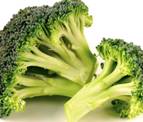
Garlic
Garlic is one of the longest-standing natural medicines. It contains allicin, which has natural antibiotic and antifungal properties. Some studies suggest it may help to maintain a healthy heart by lowering the blood cholesterol and reducing blood clotting.

Grapes
Red and green grapes are a source of soluble fibre, which helps maintain a healthy digestive tract. The phytonutrients ellagic acid and anthocyanin in red grapes have antioxidant properties. These are also found in red wine and are thought to help maintain a healthy heart, when consumed as part of a healthy diet.

Kiwi fruit
One kiwi can provide more than the full recommended daily intake of vitamin C for adults. Kiwis contain potassium which helps regulate nerves, heart beat and blood pressure and may be beneficial in reducing high blood pressure. The phytonutrient lutein is found in kiwis, which has now been shown to help maintain healthy eyesight.
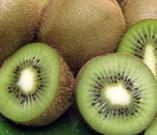
Leafy greens and cabbage
Cabbage and leafy green vegetables are a vital source of soluble fibre, the antioxidant vitamins A and C and the energy-releasing B vitamins. Folic acid, part of the vitamin B complex, is found in all leafy green vegetables. It helps release energy from food, is involved in the production of red blood cells and is important during early pregnancy to help prevent neural tube defects such as spina bifida.
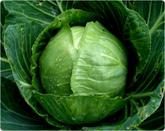
Pulses
Pulses are the dried seeds of leguminous plants including peas, beans and lentils. Pulses are low in fat, high in complex carbohydrates and protein, and provide an excellent source of soluble fibre which may help lower blood cholesterol. Pulses are particularly valuable in vegetarian diets. They have a high protein content and provide a wide array of minerals including iron and potassium, which may be beneficial in reducing blood pressure. To help the body absorb the iron, pulses should be eaten with vitamin C rich foods. Pulses are also a source of magnesium and B vitamins, which help release energy from food.
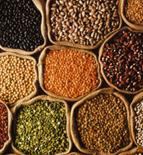
Nuts
All nuts contain protein making them useful in a vegetarian diet. They are a great source of energy but are high in calories. Nuts are high in unsaturated fat, which may help towards maintaining a healthy heart in conjunction with a healthy low fat diet. If eaten regularly, nuts are a valuable source of minerals such as iron, magnesium and zinc. Some nuts, eg almonds, brazil, hazel, peanuts and walnuts, are rich sources of vitamin E, an important antioxidant vitamin. Folic acid, part of the B vitamin complex, is present in peanuts, hazel, cashew and walnuts and helps release energy from food. It is involved in producing red blood cells and is important in early pregnancy to prevent neural tube defects such as spina bifida. Brazil nuts are an excellent source of selenium which plays an important role in the immune system.

Oily fish
An excellent source of protein, oily fish such as tuna, salmon, herring, mackerel and sardines are also rich in polyunsaturated omega 3 fats. These have anti-inflammatory properties and some studies suggest they may have a beneficial effect on heart health. Oily fish are a good source of selenium and vitamin E and canned oily fish with edible bones, including salmon and sardines, are also a good source of calcium.
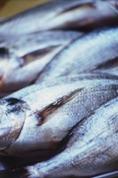
Olive oil
Olive oil is one of the main features of the Mediterranean diet which is recognised for its health-protecting properties and general well being compared to other diets, incidents of heart disease, strokes and cancer are relatively low. Olive oil contains high levels of monounsaturated fats that help lower blood cholesterol levels. Olive oil is also an excellent source of vitamin E which acts as an antioxidant that protects cell membranes.
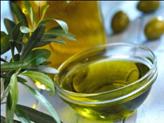
|
|
 |
Onions
All onions, especially red onions, contain the flavonol quercetin, a phytonutrient. Onions contain good levels of allicin which is thought to help lower blood cholesterol levels and stimulate the body’s immune system. Onions are also thought to improve blood circulation, regulating blood pressure.
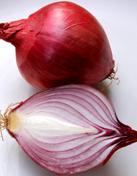
Sunflower and other seeds
All seeds are rich in minerals and calories due to their high polyunsaturated fat content. Pumpkin, sesame and sunflower seeds are also high in protein making them a useful addition to a vegetarian diet. Seeds contain minerals including iron, needed for healthy red blood cells, zinc, required for growth, a strong immune system and good urinary health, and magnesium for the release of energy from foods and strong bones. Pumpkin seeds contain omega 6 and omega 3 fats, both of which have anti-inflammatory properties and may help maintain a healthy heart when eaten as part of a balanced, low fat diet. Sesame seeds are high in calcium required for strong bones and teeth, while sunflower seeds are also an important source of vitamin E.
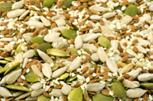
Sweet peppers
Peppers are a good source of fibre and an excellent source of vitamin C and beta carotene (especially seen in red, orange and yellow peppers), antioxidants which are thought to reduce free radical damage. Peppers are also an important source of other phytonutrients such as lutein and zeaxanthin, which are thought to be protective against deteriorating eyesight.
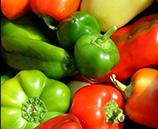
Sweet potato
Sweet potatoes are an excellent source of carbohydrate making them great energy providers. They also have a low Glycaemic Index (GI) compared to standard potatoes. Foods with a low GI ranking cause a slow, steady rise in blood sugar levels, and high GI foods cause a rapid rise. Rapid rises and falls in blood sugar affect energy levels and cause cravings, which can trigger overeating. Sweet potatoes contain antioxidant vitamins C and E and are also a good source of the phytonutrient beta carotene.
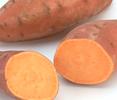
Tomatoes
Tomatoes are rich in naturally occurring antioxidants including lycopene which gives them their red colour. Greater levels of lycopene are released when tomatoes are cooked but raw tomatoes should also be included as part of a healthy diet. They also contain vitamin C which acts as an antioxidant, mopping up damaging free radicals and also plays an important part in healing bones and wounds.
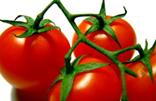
Whole grain
Whole grain is the term used to describe all cereals eg wheat, oats and barley, that contain the whole grain: the outer bran layer, the starchy centre and the germ or seed in the centre. A diet rich in whole grain is thought to assist with the lowering of cholesterol. The outer bran layer provides fibre to help maintain a healthy digestive system. Whole grains provide good supplies of carbohydrate and protein and are particularly important in vegetarian diets. Oats contain soluble fibre which reduces blood cholesterol and blood pressure. They also contain some polyunsaturated fats plus carbohydrate, protein and iron needed for healthy red blood cells. Oats also contain calcium for strong bones and teeth, and B vitamins. Whole wheat is a valuable source of fibre, iron, magnesium, zinc and the B vitamins. Many of these nutrients are lost in refining so it is important to choose products that contain the whole grain.
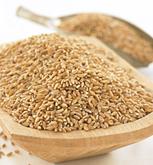
|
Good for |
Food component |
Food sources |
Heart |
Healthier fats, Soluble fibre Potassium |
Vegetables oils, reduced fat spreads, nuts, seed, avocados, pulses, oats, rye, barley, potato's, root vegetables, fruit, lentils, milk, youghurt. |
Heart and Brain |
Vitamin B12, Folate, Alcohol in moderation |
Fish, meat, poultry, eggs, fortified cereals, leafy vegetables, fruits, lentils, beans, whole grain products, liver, nuts, alcoholic drinks |
Heart, Brain and joints |
Omega 3's |
Oily fish |
Heart and gut |
Insoluble fibre |
Whole grain foods, nuts, seeds, vegetables, fruits skins i.e. tomato |
Heart and bones |
Calcium |
Low fat milk/dairy products, fortified soya, bread, canned fish |
Bones |
Vitamin K |
Green leafy vegetables, liver, brussels sprouts, broccoli, asparagus, some fruits |
Bones and muscles |
Vitamin D |
Oily fish, eggs, margarine's and spreads, fortified cereals. |
Teeth |
Fluoride |
Drinking water, tea, fish |
Muscles and immune system |
Protein |
Lean meat, chicken, seafood, eggs, pulses, quorn, soya |
Blood and immune system |
Zinc |
Meat, shellfish, milk/dairy foods, bread, cereal products. |
Prostate and immune system |
Selenium |
Brazil nuts, bread, fish, shellfish, meat, eggs |
Blood |
Iron |
Liver, meat, beans, nuts, dried fruit, whole grain foods, fortified cereals, leafy vegetables |
All body systems |
Vitamin C, Beta-Carotene, Vitamin E |
Tomatoes, peppers, broccoli, cabbage, citrus fruits, melon, kiwi, dark green, yellow and orange fruits and vegetables, plant oil, nuts, seeds, wheat germ |
Prostate |
Lycopene |
Tomatoes, guava, apricots, watermelon, papaya, pink grapefruit |
Eyes |
Lutein/Zeaxanthin |
Kiwi fruit, grapes, spinach, kale, broccoli, red and orange peppers. |
|
|


![]()

















